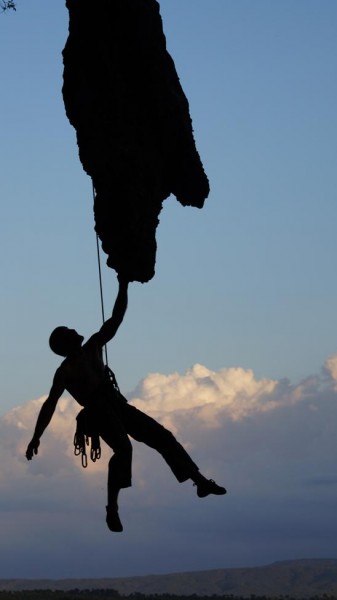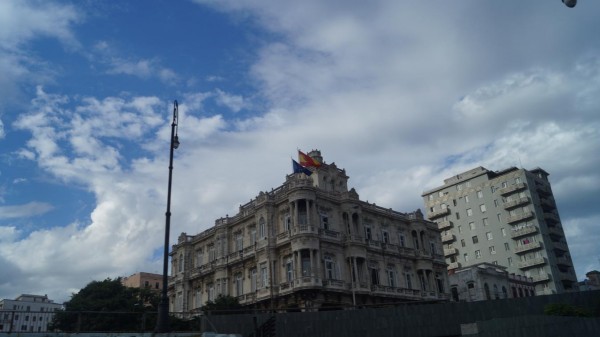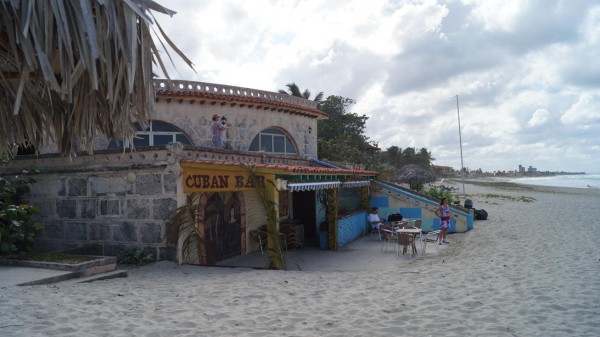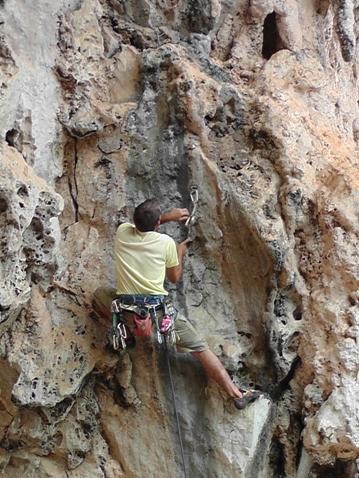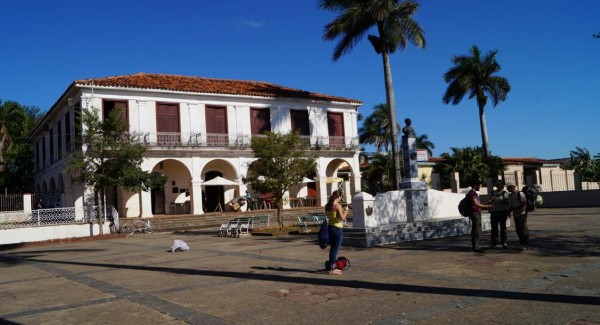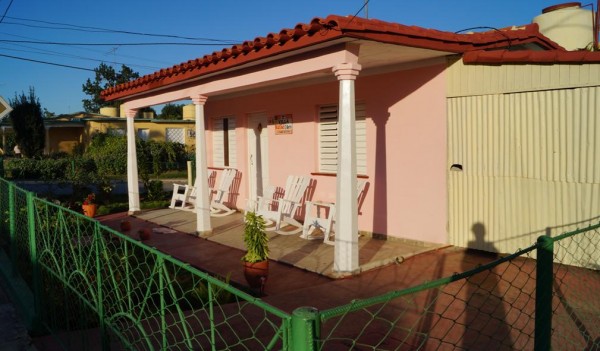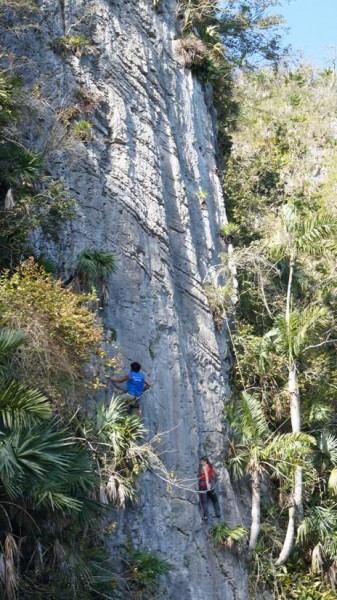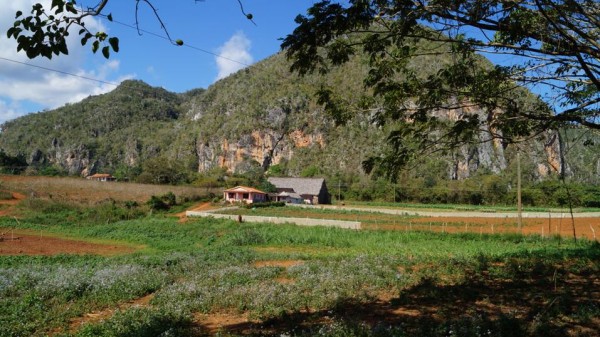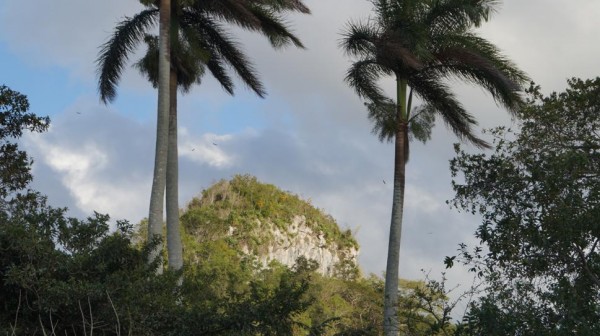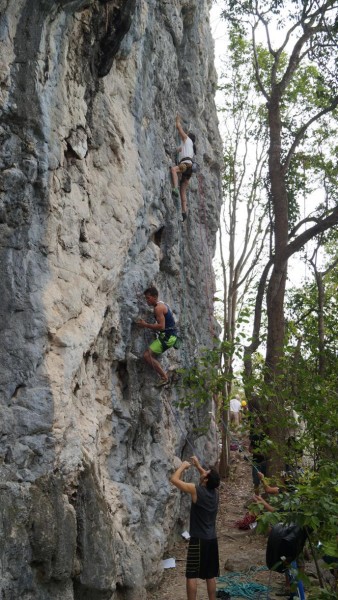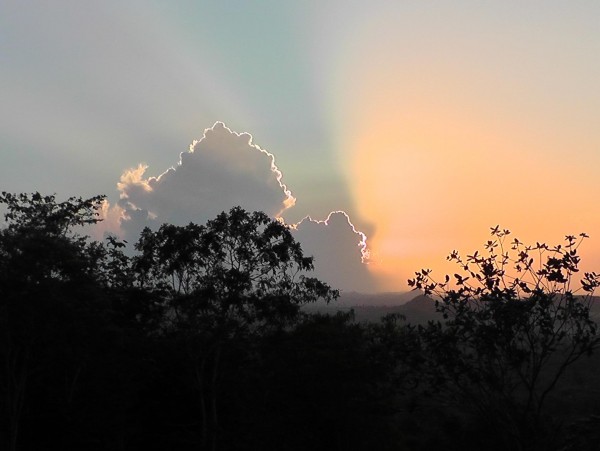When people typically think of Cuba images of Castro, cigars, an embargo, and a crisis more than half a century old abound - but think again. What actually exists is a stunning country that has tempered the passage of time. Beautiful neoclassical architecture, classic Detroit steel, a warm gregarious people, amid stunning beaches and world-class crags make it an exciting destination for climbers.
Getting There (and Back)
Traveling to Cuba from the United States can be tricky. Due to long-standing political issues, it is easier to fly out of Canada, Costa Rica, or Mexico, with Mexico City offering the cheapest fare. Depending on the season, a ticket will run anywhere from $400 (Seattle) to $600 (New York) dollars. If spending the night in Mexico City, find a room near the airport. There are a number of three and four star hotels less than a mile away. The airport has a high police presence and is a relatively safe area to stay and walk around while waiting for your connecting flight.
A roundtrip flight from Mexico City to Havana will cost around $500 dollars and take about two and a half hours. Going through customs in Havana is a breeze, but be aware that if you bring US dollars you will be charged a 10% penalty and a 3% exchange fee. Try to bring another currency. Cuba draws many Europeans, so consider bringing Euros. When exchanging your money for the Cuban Convertible Peso (CUC), the tourist version of the country's currency, try to find a bank or government-approved vendor, called Cadecas. Most hotels and resorts have an exchange kiosk, but these are unregulated and will tend to give you less favorable exchange rate. Make sure to keep 25 CUC in cash for the Airport Departure Tax when you leave the country.
La Habana
Exploring Havana can be as remarkable and memorable as crushing the hardest route. Havana sits in northern Cuba next to the Straits of Florida. Situated around a narrow bay that bleeds into the city's heart, Havana has undergone many radical changes in its 500-year existence. Founded as a springboard for Spain's conquest of the New World, Havana played host and harbor to many treasure-laden galleons as they made their way back to the Old World. Over the years the city has changed from a formidable Spanish fort, beset by pirates and privateers alike; a trading post for slaves, sugar, and tobacco; a laissez-faire business paradise; and a revolutionary's dreamland. The iterations of such a city have been vast and earth shattering. Whether by the torch of a French corsair or the whim of a dictator, its face has been swept clean and reborn countless times over. The city's own architecture speaks to this perfectly. French art deco and Baroque stylizations opposed against Soviet-era utilitarianism. Old colonial plantations and mansions against a backdrop of buildings that could have been transplanted straight from Rome or Venice. Some have faded from years of neglect, their faces cracked and weather worn. Others have been reborn, revitalized by new government programs aimed at preserving the city's historical landmarks.
When staying in Havana, keep in mind that the city is divided into three distinct districts, each offering its own unique experience. La Habana Viejo - old Havana - is what you have probably seen on television. It is filled with old colonial forts and palaces, reminiscent of a time when Havana was the most well fortified city in the Caribbean. It is brimming with old markets, beautiful courtyards, and Baroque cathedrals. Havana Centro blends elements of Rome and Paris, and was the site of the city's sugar boom in the 19th century. This district once curtailed itself to the rich, and is still home to elegant hotels and well manicured parks. The third district, Vedado, is resplendent of the 1950's, paying homage to Frank Sinatra and the mobsters he supposedly entertained. High-rise hotels, casinos and showrooms, modern mansions for the American playboys, all built with one idea in mind: that money is king. If you are looking for a more resort feel, you can stay at the beach resorts at Varadero, about two hours west of Havana. Here, all the Western amenities are available with poolside bars, restaurants, and sprawling sandy beaches.
Each area offers it own experience, and all are accessible by bus or taxi no matter where you plan on staying. Hotels tend to run around $100 to $200 a night, but can fluctuate depending on the season and when you check in. Also, consider staying in a casa particular, which are homes rented out by families that include meals, laundry, and hot showers. They are more basic but tend to give a better feeling of what it is really like to live in Cuba. Most cost between $25 and $40 dollars a night.
Climbing in Cuba is different than any other place in the world. The Cuban government has officially barred all types of climbing in the western providence of Pinar del Rio, specifically centralized in the most developed area, Vinales. Local climbers have been dealing with this unsavory situation for years, with the government edicts having little impact on the momentum of the area's development. There has been no dialogue between the government and the people who use the area, so little is understood as to why Vinales has been restricted. Regardless of the government position, nothing has been done to stop climbers from using the area. Police do patrol Vinales, but often ignore climbers entirely. If in the unlikely scenario you are stopped, they will simply ask you to leave. The most popular area, Mogote del Valle, is the only one actually overseen, with the entire backside of the crags unguarded. If you are caught, grab some lunch, wait until 2:00pm when the patrols end, and get back to climbing!
The cheapest way to reach Vinales from Havana is to take the bus. It leaves twice a day: at 9:00am, and 2:00pm. The ride takes roughly three hours and will cost you $12 dollars one way. Be aware that tickets are sold on a first come first serve basis, so make sure to arrive at the station well before your bus departs.
Whereas Havana is a cultural metropolis of 2.1 million people, Vinales is a small remote town with only two streets running through it. It started as a town of runaway slaves, but soon became yoked under the growth of tobacco farming with agriculture dominating the area to this day. Coffee, various fruits and vegetables, and of course tobacco, are the economic staples that have helped this town thrive. The recent boon in tourism, especially climbing, has caused the town to grow, but not in the way you would expect. No major hotels, restaurants, or nightclubs have sprung up in the interim, leaving the town quaint. When staying in Vinales, choose from one of many casa particulars, which are inexpensive, close to the crags, and often are good places to meet local climbers and guides. Local climbing casa's can be found at:
http://climbingcasas.wix.com/cuba-climbing-casas.
The climbing in Vinales is superb, with overhanging features and unique lines dominated by jugs and pockets. The solid limestone rock is riddled with overhanging stalactites and columns of tufa. The mild weather averages around 70° F with lows in the 50's and highs in the 90's. Most seasons are perfect for climbing staying consistent in temperature and weather year round. The summer is the monsoon season, but the overhanging features offer good protection from the rain. Hurricanes typically hit the island in the fall, mostly in October and November, but Vinales' location on the north side of the island helps shelter it from the brunt of most tropical storms. More than 80% of the routes in Vinales can be found at Mogote del Valle, no more than half a mile and clearly visible from town. If you are looking to connect with local climbers, a yearly competition takes place in Vinales from January 29th to February 2nd. Visit
http://www.srcfc.org/cuba for more information.
Many local guides can show you were to climb. Through a SRCFC (Solid Rock Climbers for Christ)/ IMLI (International Mountain Leadership Institute) Spanish guide training program, many are learning how to become better guides. Due to the politically uncertain nature of climbing in Cuba, many have begun to develop areas away from Mogote del Valle, often on the backside of Valles de Vinales. Other areas have begun to spring up due to such sanctions, and if you are into a more adventurous type of climbing, places such as Sancti Spiritus and Campismo Gibara await. To reach Campismo Gibara, you will need to fly to Holguin, which costs around $300 dollars. Buses can be cheaper, around $44 dollars, but take almost 13 hours from Havana. A bus ticket to Sancti Spiritus from Havana will run around $23 dollars and take about 6 hours. Each area offers more than just virgin climbing, with picturesque beaches, colorful, vibrant towns, and the always friendly Cuban people
Showing Your Appreciation
The U.S embargo of Cuba began in 1950, two years after Batista was ousted by Castro and his revolutionaries in a military coup d'état. Ever since then, the United States has refused to have economic relations with the island nation. Humanitarian aid is still given, but outright trade with Cuba is considered a felony. For most of the country's communistic existence, it relied heavily on aid from the Soviet Union. With the collapse of the USSR in 1991, Cuba fell into an economic depression known as the "Special Period".
Since then the country has slowly begun to right itself, both with aid from foreign powers and reformations to its own internal policies. Private businesses are now slowly being allowed, as well as food markets where producers are allowed to sell off whatever excess goods they have after the state has taken its share. Still, the country's isolation from its immediate neighbor has stifled Cuba economically. The many classic cars that roll along its streets are original, but kept alive by ingenuity and love more than anything else. Access to the internet is unheard of except in resorts and tourist areas. As of 2012, the average income of a Cuban worker was $19 dollars a month. Though on the rise, it is still poor by most standards.
The economic situation of Cuba has affected its populous entirely and the climbers of Vinales are no exception. Gear is almost impossible to buy in the country. Essentials such as shoes and harnesses, ropes and bolts, must be brought in by foreigners for developments to continue. When visiting Cuba, make sure to pack an extra bag with as much gear as you can bring, donating anything and everything you can. Though unlikely, locals that climb in Vinales and beyond can face imprisonment for pursuing the sport they love. It is a small price to pay to see that such unique and beautiful areas continue to grow.
What gear you bring is often dependant on your disposition. The established climbing in Cuba is much like Europe, very modern and almost entirely sport. A rack of quickdraws and a few 60-meter ropes would be more than enough to explore Mogote del Valle and the greater Valles de Vinales area. If your temperament is a bit more adventurous, then you need more gear, such as a drill or a rack of trad. The sheer amount of potential that exists in Cuba is staggering. From Vinales in the north to the Sierra Maestra's, a 6000-foot mountain range in the southeast, Cuba is a climber's paradise. The position of the Cuban government is regrettable, relegated mostly to Vinales, but can always be expanded unilaterally. Be careful and prudent, and always respectful when exploring new areas.
Connecting with Cuba
People rarely leave Cuba unaffected, rather they become passionate about a country few understand. Climbing, like so many others things, is alive and well in Cuba, buoyed by a dedicated group of locals and foreigners alike. Modern Cuba exists on the precipice of change, balanced precariously between its complex past and immediate future. People wait with bated breath to see which way the country will tip. In the meantime, do not let the politics of the world dissuade you from visiting a wonderful country, brimming with adventure and possibility. When booking your next trip to Hawaii, or Mexico, or even Costa Rica, take a moment to linger on Cuba and what it really has to offer.
Story by Daniel Rova and Rick Krause
Travel Recourses
Books
Cuba Climbing, by quickdraw Publications
http://quickdrawpublications.com/product/cuba-climbing/
http://www.urbanrock.com/cuba-climbing
http://vinalestours.com.mx/
Web Sites
http://www.cubaclimbing.com/
http://escaladaencuba.com/
http://climbingcasas.wix.com/cuba-climbing-casas
http://www.srcfc.org/cuba
http://www.srcfc.org/cuba/climbingtrip
Facebook:
https://www.facebook.com/pages/Climbing-Cuba/189111474449528
https://www.facebook.com/pages/cubaclimbingcom/175575103437
https://www.facebook.com/groups/492016007564543/?ref=br_tf
https://www.facebook.com/armando.menocal?fref=ts
Video:
https://www.youtube.com/watch?v=N2XNoxBfsrs&feature=youtu.be
https://www.youtube.com/watch?v=UaR9UffokZA
